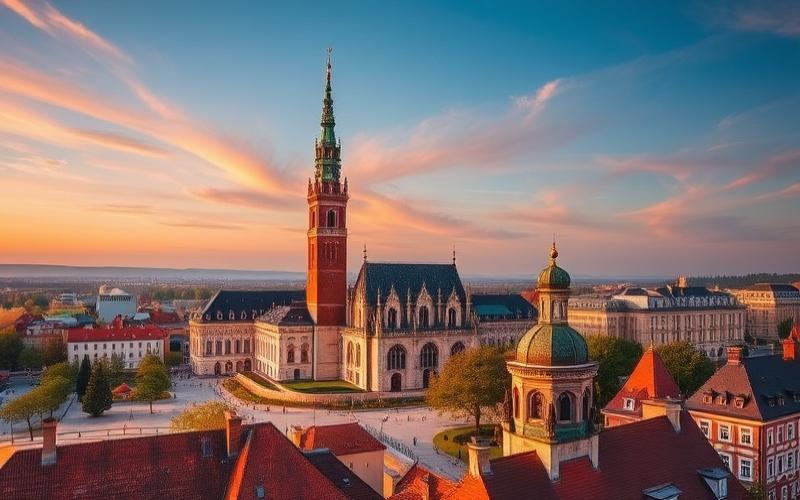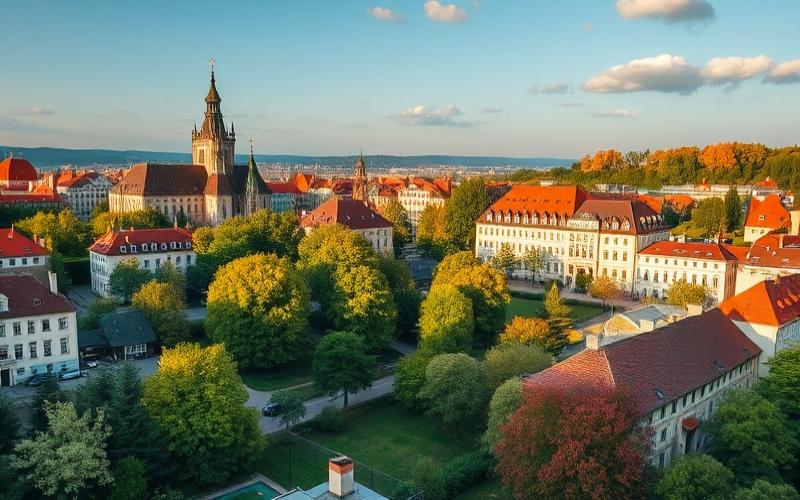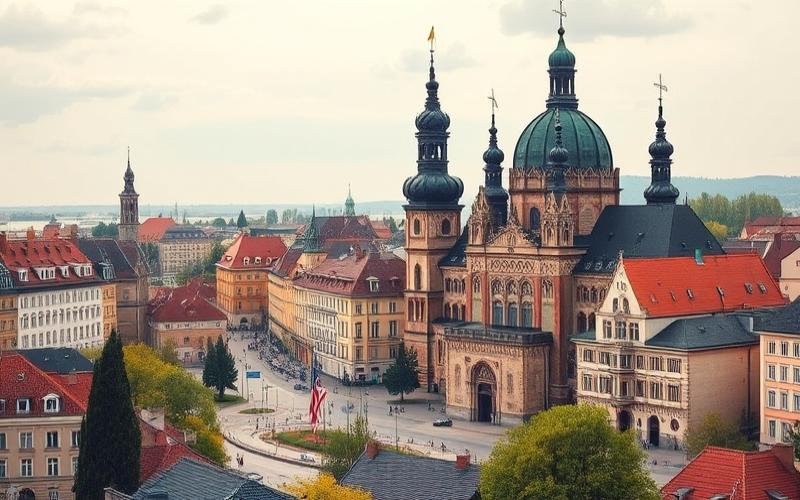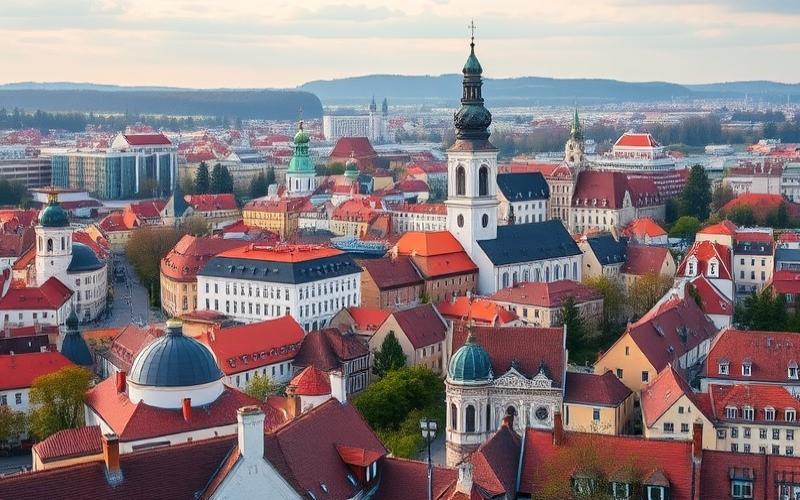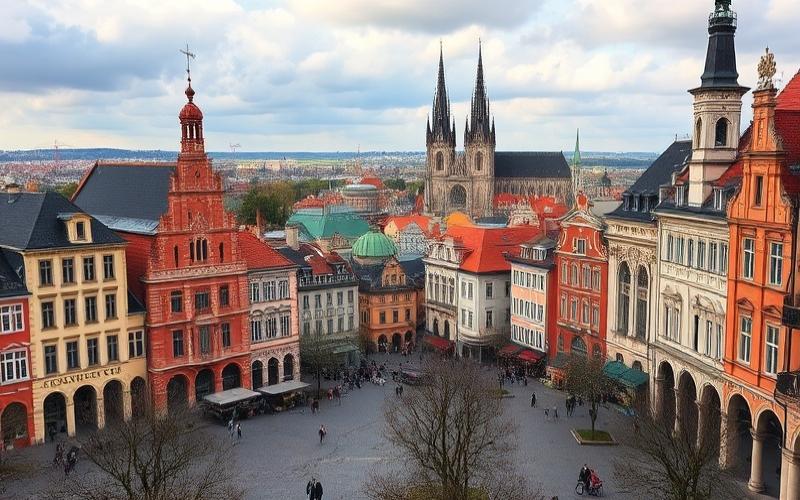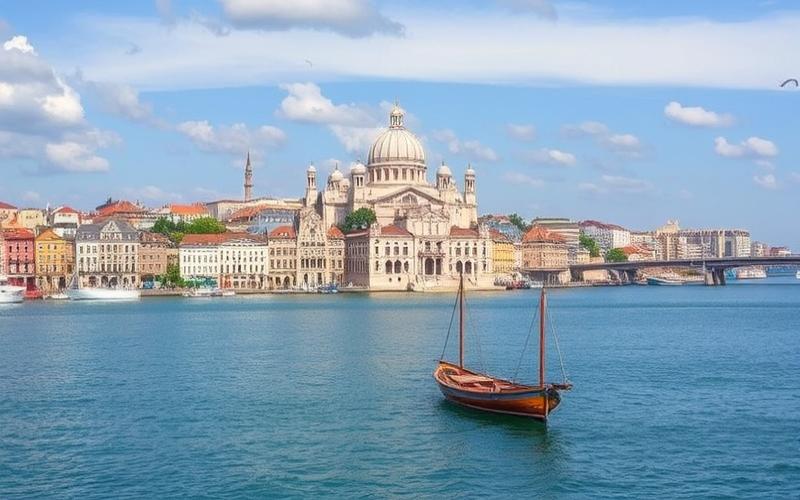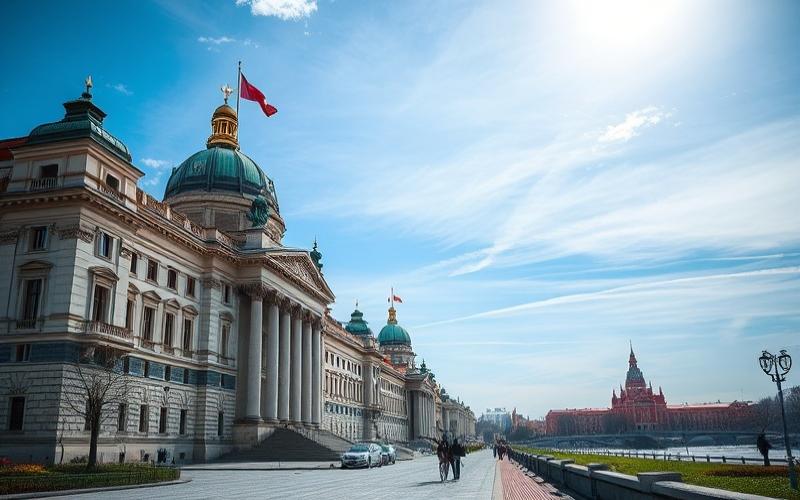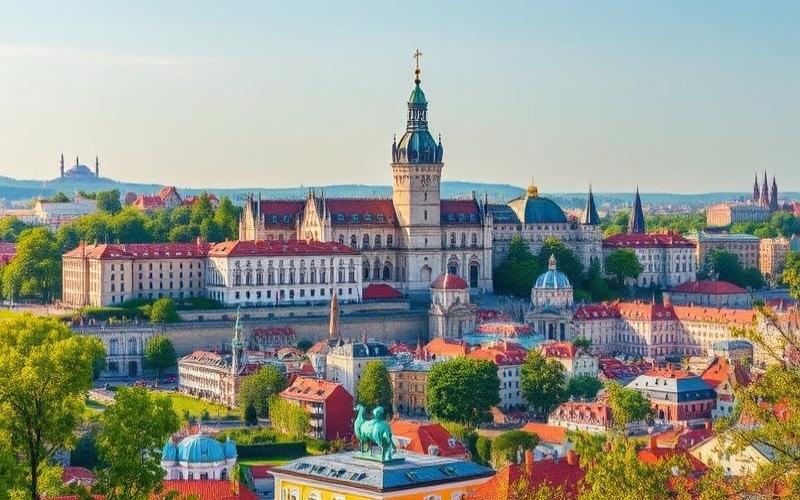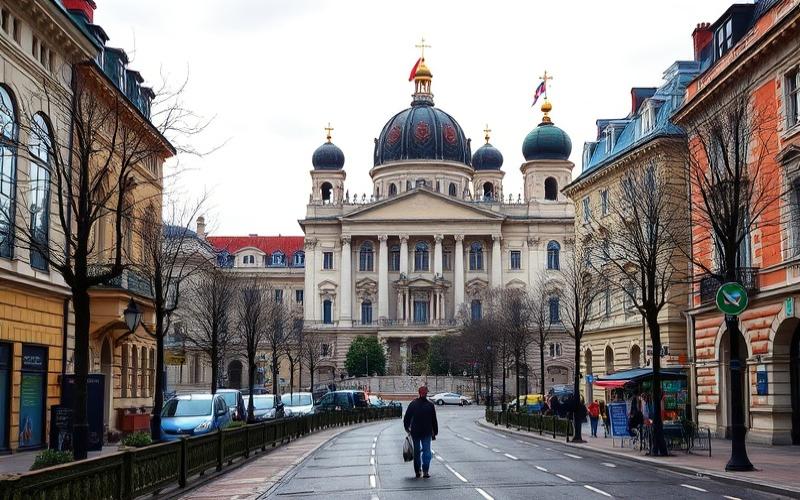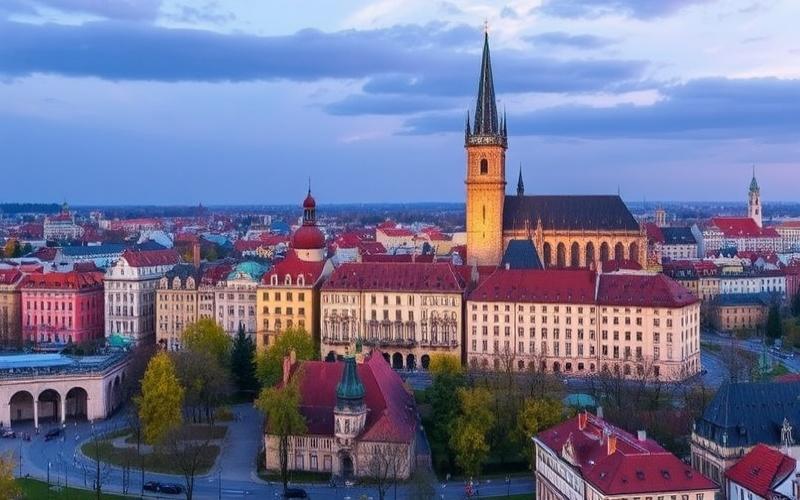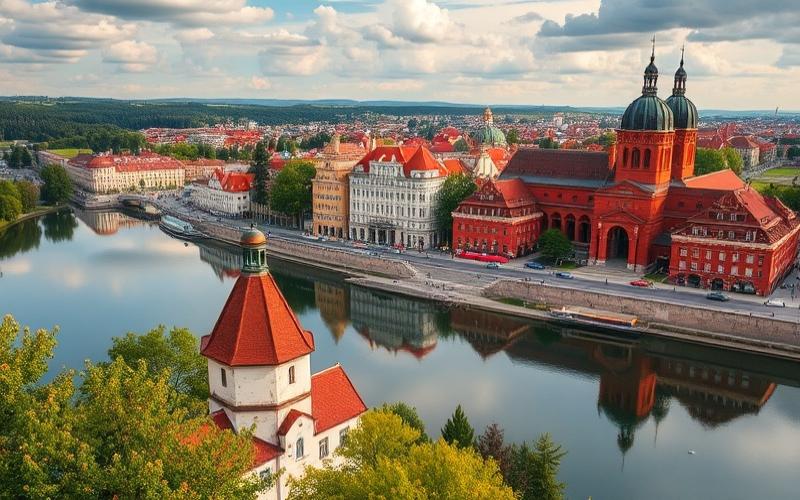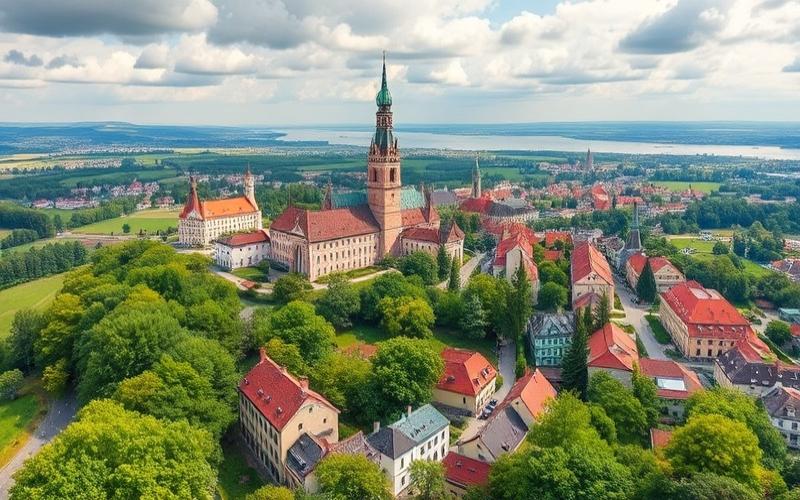
 Published on and written by Cyril Jarnias
Published on and written by Cyril Jarnias
The Commercial Real Estate Market in Poland
The commercial real estate market in Poland currently presents exceptional opportunities for international investors, attracted by robust economic growth and a favorable business climate.
As the country continues to establish itself as a key destination for businesses seeking to establish operations in Central Europe, demand for quality commercial spaces is increasing significantly, offering attractive returns and long-term appreciation potential.
Promising Sectors
In this dynamic environment, the office, logistics, and retail sectors stand out particularly, supported by:
- Structural changes
- Government efforts to stimulate foreign investment
Good to Know:
Poland offers one of the most stable and attractive environments for commercial real estate investment in Central Europe, with some of the highest rental yields in the region.
Exploring the Unique Opportunities in Polish Commercial Real Estate
Commercial real estate in Poland is attracting more and more investors thanks to a unique combination of economic, political, and structural factors.
Key Attractiveness Factors:
- Robust Economic Dynamics
- GDP growth above the European average (2.7% in 2024, forecast 3% for 2025).
- Rising consumer purchasing power and rapid development of innovative sectors (IT, financial services).
- Political Stability and Secure Regulatory Framework
- Stable democracy providing a business-friendly environment.
- Regulations favorable to foreign investors with strong guarantees for international capital.
- Targeted Government Incentives
- Special Economic Zones (SEZs) offering partial or total tax exemptions for several years depending on the sector and location.
- Regional programs supporting logistics, industrial, or technological innovation.
Key Promising Segments:
| Sector | Recent Trends | Examples/Recent Projects | Vacancy Rate | Prime Yield |
|---|---|---|---|---|
| Logistics | Strong e-commerce growth; Development of XXL warehouses around major highways; Cross-border flows strengthened by strategic position between Western Europe and Ukraine. | Panattoni Logistics Park near Wrocław; Prologis Park Poznań Expansion | Retail parks: ~4–6% | Between 6% and sometimes >7% |
| Offices | Demand driven by IT multinationals/shared services outside Warsaw; Boom in coworking & flex-offices in regional cities. | Olivia Business Centre Gdańsk Business Garden Poznań | Warsaw CBD: ~10%, main regions: Commercial property types that boost your portfolio |
Commercial Property Types That Boost Your Portfolio
In Poland, the main categories of commercial properties that can increase the value of an investment portfolio are offices, retail spaces, logistics warehouses, and industrial complexes. Each type presents specific advantages and disadvantages depending on the economic context, location, and market evolution.
| Property Type | Advantages | Disadvantages |
|---|---|---|
| Offices | Stable demand in major cities (Warsaw), high downtown rents, corporate tenants | Risk of higher vacancy outside major centers, shift towards remote work |
| Retail Spaces | Constant foot traffic in dynamic areas or suburban retail parks, possible diversification | E-commerce pressure on some traditional segments, dependence on local consumption |
| Logistics Warehouses | Strong growth linked to e-commerce (+20% of logistics stock in five years), attractive yield | Sensitivity to global economic/logistics fluctuations; increasing competition |
| Industrial Complexes | Interest in industrial reshoring, stability of long leases | Significant initial investments; dependence on a limited number of industrial players |
Current Trends in the Polish Market
- The rapid growth of e-commerce is strongly stimulating demand for modern warehouses: between 2020 and 2025, total stock reached over 30 million m² with a vacancy rate below 7%.
- Retail parks are developing mainly in secondary cities where they resist online commerce better than large shopping centers.
- The office segment remains dynamic in Warsaw but is undergoing transformation with growing demand for flexible or hybrid spaces.
- The anticipated emergence of Polish REITs (Listed Real Estate Investment Companies) could further energize the sector.
Key Statistics
- In Warsaw: average prime office gross yield ≈ 6%, prime logistics ≈ 5–5.5%
- Average annual growth in logistics rental value higher than office in the recent period
- Warsaw office vacancy rate
Geographical AND sectoral diversification remains essential to optimize return/resilience in the face of rapid changes observed in the current Polish commercial real estate market.
Good to Know:
To maximize your commercial real estate portfolio in Poland, diversify it with offices in Warsaw, where demand remains high, and retail spaces in major cities like Krakow, benefiting from constant tourist flow. With the surge in e-commerce, investing in logistics warehouses, particularly around Łódź, becomes crucial; they offer an average annual yield of 6.5% according to recent analyses. Industrial complexes in special economic zones, like Katowice, allow for tax reductions but require careful assessment of local policies. To optimize return on investment, combine these properties considering occupancy rates and regional economic forecasts, relying on updated market studies.
Analyzing Profitability: Opportunities and Challenges of the Polish Market
The Polish commercial real estate market in 2025 stands out for its robustness and dynamism, underpinned by a stable economy and sustained growth in foreign investment. Profitability prospects are particularly attractive for investors seeking to diversify their portfolio in an expanding economic environment.
Sectoral Opportunities
| Sector | Trends & Development Potential |
|---|---|
| Offices | Increased demand linked to tertiary sector growth, continuous modernization of existing stock, and relocation of international companies. Warsaw remains the main hub but secondary cities (Krakow, Wrocław) are gaining attractiveness. |
| Retail Spaces | Marked post-pandemic recovery; rise in retail sales (+7.6% year-on-year in April 2025). Retail parks are developing strongly in suburban areas where demand grows alongside local demographic expansion. Shopping center foot traffic is rebounding thanks to returning consumer confidence and successful e-commerce integration. |
| Logistics | Strong expansion fueled by the e-commerce boom, modern warehousing needs (cross-docking), and Poland’s strategic position as a European crossroads (proximity to Germany/Ukraine). Increased construction of sustainable logistics hubs to meet growing ESG requirements from international clients. |
Key Factors Contributing to Opportunities
- Economic Growth:
- Forecast average GDP rate: +3.4% (2025–2026).
- Continuous rise in purchasing power despite high inflation in recent years.
- Foreign Investments:
- Poland ranks among the preferred European destinations for FDI (6th place according to EY European Attractiveness Survey 2024).
- Favorable Government Policies:
- Administrative simplification for foreign investment.
- Tax incentives targeting particularly the technology/logistics sector.
- Demographic Dynamics & Rapid Urbanization
- Push Towards Sustainable Real Estate: Banking/fiscal incentives encouraging energy renovations or new certified constructions.
Major Challenges for Investors
- Complex Local Regulations:
- Multiple required permits depending on regions/sectors; need for in-depth local expertise.
- Currency Fluctuations:
- Sensitivity of the Polish zloty against the euro/dollar potentially impacting net returns.
- Environmental Sustainability:
- Increased regulatory pressure on ESG compliance; need to invest in energy-efficient or green-labeled buildings.
- Other Potential Obstacles:
- Increased competition in some prime segments
- Variable financing costs depending on macroeconomic context
Recent Illustrative Data
- Annual retail sales growth April 2025: +7.6%
- Poland GDP Forecast: +3.4% annually until 2026
- Relative share of commercial real estate investments:
- Offices / Retail = dominant segments
- Logistics = fastest-growing segment
General Outlook Summary
The Polish environment combines macroeconomic stability, fiscal/regulatory attractiveness for foreign capital, and rapid adaptation to new global trends (e-commerce/green logistics). Yields remain competitive compared to mature European markets while offering higher potential linked to an active phase of structural catch-up.
For any institutional or private investor seeking geographical diversification combined with profitable dynamics over the medium-long term — with proactive management of regulatory/environmental risk — the Polish commercial real estate market today presents a very favorable profile!
Good to Know:
The Polish commercial real estate market presents attractive opportunities, notably thanks to its sustained economic growth and strengthening foreign investments. Offices, retail spaces, and logistics centers appear as promising sectors, boosted by infrastructure modernization and government incentive policies. However, investors must navigate carefully in a complex regulatory environment and consider possible fluctuations of the zloty, as well as growing environmental sustainability requirements. For example, Warsaw experiences strong demand for office spaces, while logistics centers benefit from a central geographical position in Europe, ideal for cross-border trade. Despite these challenges, recent data indicates stable rental yields and significant growth potential, thus offering attractive profitability prospects for sector players.
Deciphering Current Sector Trends for Informed Investments
Commercial real estate in Poland is experiencing an evolution marked by several structural trends: rapid urbanization in large metropolitan areas, boom in flexible office spaces, increasing digitalization, and growing importance of sustainability.
Major Sector Trends
| Trend | Description | Examples/Recent Statistics |
| Accelerated Urbanization | Warsaw, Krakow, and Wroclaw are seeing their populations increase, stimulating demand for modern offices and commercial spaces. | In Warsaw, the share of certified green buildings reaches a record level. |
| Flexible Spaces & Co-working | Companies favor modular solutions: coworking, short-term or hybrid leases. | Continuous growth of flexible supply in downtown Warsaw. |
| Digitalization | Use of digital platforms (virtual tours, automated lease management) is accelerating across all segments. | More and more real estate operators are deploying their own digital solutions. |
| Sustainability | Green certification becomes a key criterion (BREEAM/LEED). Green buildings attract international investors and tenants. | Increase in the number of certified buildings in Warsaw and Krakow. |
Influence on Investment
- Urbanization: The influx into large cities primarily directs investment towards Warsaw and other regional hubs where occupancy rates remain high.
- Flexible/Co-working Spaces: Adaptability attracts SMEs as well as large corporations; this segment is considered promising in the medium term.
- Digitalization: It facilitates multi-site management for institutional investors while reducing some operational costs.
- Sustainability/Green Buildings: These assets are less sensitive to regulatory/functional obsolescence; they also benefit from a premium on rents or upon resale.
The added value of certified buildings continues to grow – they are becoming essential to attract demanding international clients while anticipating stricter environmental regulations.
List of particularly promising sectors:
- High-end offices (especially those eligible for coworking)
- Suburban logistics parks (proximity to highways)
- Retail parks in suburban areas
- Mixed-use buildings integrating retail/services/healthcare
Recent Examples
- Signing of a major lease by a 3PL company for 67,800 m² at the 7R Park Gdańsk III logistics park.
- Record renewal by an e-commerce company for nearly 40,000 m² in Szczecin I.
- Accelerated development of the retail park format around large metropolitan areas.
Associated Potential Risks
- Macroeconomic uncertainties: persistent inflation potentially weighing on real purchasing power despite its nominal rise observed since early 2024.
- Regulatory changes: mandatory adoption of new master plans by all Polish municipalities before June 2026 potentially deeply altering some existing urban/commercial zones.
- Limited risk-taking by end-users (marked preference for renewals rather than relocations).
Synthetic list of expert opinions:
- Professionals anticipate “a continued tightening between limited new supply and expected GDP growth from late 2025-early 2026”;
- “Competition will intensify around premium eco-certified surfaces while the secondary market could see its attractiveness diminish if these issues are neglected.”
Strategic choices will now have to integrate both environmental requirements and the capacity to quickly offer technological/flexible modularity.
Good to Know:
Commercial real estate in Poland is experiencing growth driven by rapid urbanization in cities like Warsaw, Krakow, and Wroclaw, where demand for flexible office spaces and co-working solutions is exploding. According to JLL, demand for flexible offices increased by 20% in 2023, reflecting a transformation fueled by the digitalization of real estate services and increased attention to green buildings, which can reduce energy costs by 30% according to experts. Investors, seeking stable returns, are turning to sustainable projects at the heart of this transition. However, risks should not be underestimated; economic uncertainties and regulatory changes in Poland, such as adjustments to property taxes, can influence profitability. Optimizing investments requires sharp analysis of current trends and an understanding of sectors that, such as technology and logistics, show particularly promising growth prospects in this changing landscape.
Disclaimer: The information provided on this website is for informational purposes only and does not constitute financial, legal, or professional advice. We encourage you to consult qualified experts before making any investment, real estate, or expatriation decisions. Although we strive to maintain up-to-date and accurate information, we do not guarantee the completeness, accuracy, or timeliness of the proposed content. As investment and expatriation involve risks, we disclaim any liability for potential losses or damages arising from the use of this site. Your use of this site confirms your acceptance of these terms and your understanding of the associated risks.







